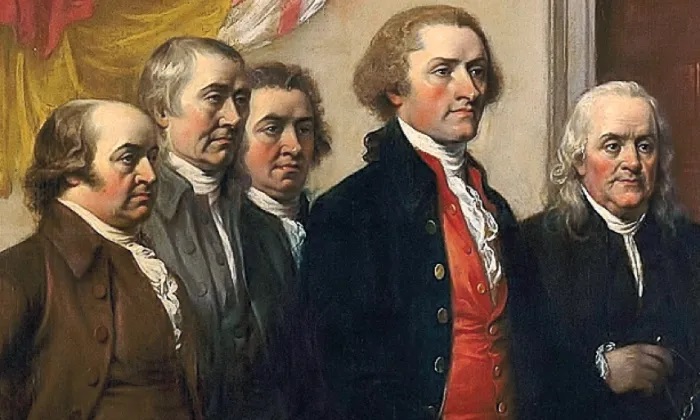Anthony Weiner, Bernie Madoff, low economy, high unemployment, questionable housing, if you’re house hasn’t already been hit by a flood or tornado.
How do you remain optimistic in an atmosphere of so much negative news?

In an intriguing TIME magazine cover story (The Science of Optimism), author Tali Sharot offers some positive news.
“Collectively we can grow pessimistic — about the direction of our country or the ability of our leaders to improve education and reduce crime,” Sharot writes. “But private optimism, about our personal future, remains incredibly resilient. A survey conducted in 2007 found that while 70% thought families in general were less successful than in their parents’ day, 76% of respondents were optimistic about the future of their own family.”
On the other hand, Sharot points out, “Overly positive assumptions can lead to disastrous miscalculations — make us less likely to get health checkups, apply sunscreen or open a savings account, and more likely to bet the farm on a bad investment. But the bias also protects and inspires us: it keeps us moving forward rather than to the nearest high-rise ledge. Without optimism, our ancestors might never have ventured far from their tribes and we might all be cave dwellers, still huddled together and dreaming of light and heat.
“To make progress, we need to be able to imagine alternative realities — better ones — and we need to believe that we can achieve them. Such faith helps motivate us to pursue our goals. Optimists in general work longer hours and tend to earn more.”
In Flourish, psychologist Dr. Martin Seligman “…identifies four factors that can help individuals thrive: positive emotion, engagement with what one is doing, a sense of accomplishment, and good relationships,” Publisher’s Weekly writes. Flourish “has some useful things to say, such as how even soldiers with PTSD can be taught resilience to recover and even grow from their traumas, and how students of all ages can be taught focus, delayed gratification, and GRIT, a combination of drive and perseverance.”
Perhaps the most well-known proponent of optimism was ‘50s minister-author Norman Vincent Peale with his popular book,The Power of Positive Thinking. A New York Times Bestsellerfor 186 consecutive weeks, Positive Thinking was responsible for uplifting millions of lives. In spite of criticism and controversy regarding Peale’s techniques, the proof remains in the pudding. (Click here for reader reviews on Amazon.com.Of the more than 230 reviews, 151 rate the book at five stars. That’s impressive by any standard).
During the time I spent living in Palm Desert, California, I was grateful for the many conversations with my local minister, Dr. Tom Costa. His ability to listen to my troubles and supply me with the necessary optimistic and faith-based actions changed my life in a profound way. During times of doubt, Dr. Tom would remind me to “destroy all thoughts of inactivity and doubt. You cannot become discouraged or afraid if you realize that there is but One Mind.”
Returning to the TIME story, “It seems that our brain possesses the philosopher’s stone that enables us to turn lead into gold and helps us bounce back to normal levels of well-being,” Sharot writes. “It is wired to place high value on the events we encounter and put faith in its own decisions…. Imagine you need to pick between two equally attractive job offers. Making a decision may be a tiring, difficult ordeal, but once you make up your mind, something miraculous happens. Suddenly — if you are like most people — you view the chosen offer as better than you did before and conclude that the other option was not that great after all.
“It is tempting to speculate that optimism was selected by evolution precisely because, on balance, positive expectations enhance the odds of survival. Research findings that optimists live longer and are healthier, plus the fact that most humans display optimistic biases — and emerging data that optimism is linked to specific genes — all strongly support this hypothesis. Yet optimism is also irrational and can lead to unwanted outcomes. The question then is, How can we remain hopeful — benefiting from the fruits of optimism — while at the same time guarding ourselves from its pitfalls?
“I believe knowledge is key. We are not born with an innate understanding of our biases. The brain’s illusions have to be identified by careful scientific observation and controlled experiments and then communicated to the rest of us. Once we are made aware of our optimistic illusions, we can act to protect ourselves. The good news is that awareness rarely shatters the illusion. The glass remains half full. It is possible, then, to strike a balance, to believe we will stay healthy, but get medical insurance anyway; to be certain the sun will shine, but grab an umbrella on our way out — just in case.”
“Formulate and stamp indelibly on your mind a mental picture of yourself as succeeding,” Dr. Peale tells his readers. “Hold this picture tenaciously. Never permit it to fade. Your mind will seek to develop the picture. . . Do not build up obstacles in your imagination… We tend to get what we expect.”
Comments









